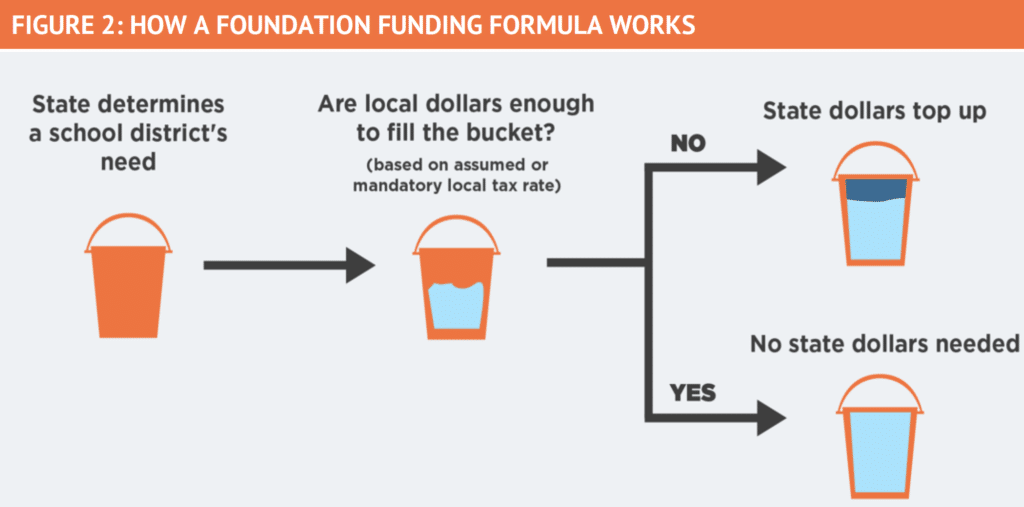Many school finance formulas can be traced back to the 1920s, when foundation programs were designed to guarantee school districts a funding floor while accounting for their ability to raise local education dollars. The key feature of this approach is that state and local tax revenue contribute to what is essentially a single pot of dollars that funds school districts. Although lower-wealth districts receive a disproportionate share of state formula aid under foundation programs, all districts are ultimately funded according to state formula calculations.
Foundation formulas take different forms across states (and not every state uses one), but generally operate using three basic steps:
STEP 1: Determine School Districts’ Revenue Entitlement: The state calculates how much revenue each district will receive, commonly referred to as a “revenue entitlement.” States have varying approaches, but formulas are often based on some combination of enrollment counts, student characteristics, and district characteristics.
STEP 2: Determine School Districts’ Local Share: The state calculates the share of each district’s revenue entitlement that can be covered by local revenue sources—often property taxes. Usually, this calculation is based on a uniform local property tax rate that is either assumed or mandatory for districts to levy. The higher a district’s local wealth (i.e. its ability to pay), the greater its local share will be. Nebraska’s formula, for example, assumes each school district will impose a local property tax rate of $1 for every $100 in assessed valuation.
STEP 3: Determine School Districts’ State Aid: A school district’s local share is then subtracted from its revenue entitlement to determine its state aid. If a school district can’t raise its full revenue entitlement from local sources, the difference is backfilled with state aid. Generally, most school districts require state aid to meet their revenue entitlement under a foundation program. However, many states have at least some districts that are off formula, meaning they raise their entire revenue entitlement locally and don’t receive any state aid. Off-formula districts tend to be property-wealthy and are generally unaffected by the state’s funding formula.

This column is an excerpt of Public Education Funding Without Boundaries: How to Get K-12 Dollars to Follow Open Enrollment Students.

